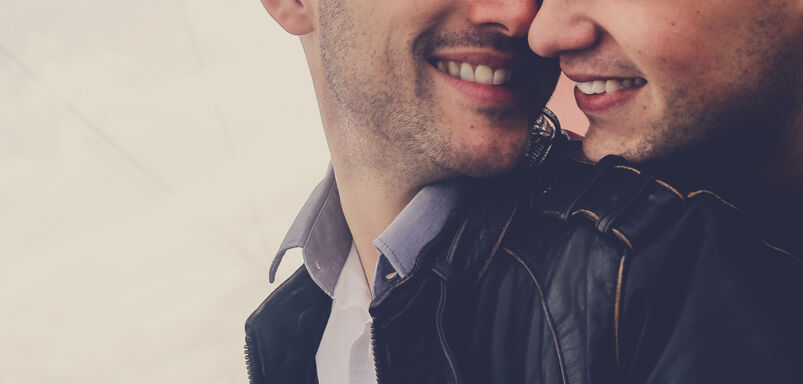
Nowadays, you can find relationships, regular hookups, or just a lunch-hour diversion with a few taps on your smartphone. But it wasn’t so long ago that dating—and diddling—took more doing.
And the gays who lived and loved during those times recalled their experiences on Reddit recently—after one user asked what dating was like before Grindr and other apps hit the scene in 2009. Of course, Reddit tends to be a younger person’s platform, so many of the more mature gays offering responses relied on pre-Grindr social networks, even if doing so meant using dial-up —or actually leaving the house!
Here are some of those recollections, abridged for brevity and edited for readability.
“It really wasn’t that mysterious. You met at a bar or wherever and hooked up or exchanged numbers. It was certainly easier in places like San Francisco, where you could assume everyone else at the grocery was gay. The difference, I would say, is that you had to have the courage to walk up to a stranger and introduce yourself and express interest.”
“You had to meet out doing things. I met gay people as a teen working at the mall. I met gay people in college through the gay student group. I met gay people through gay rights groups. And then I moved to San Francisco and met gay people everywhere.”
“There were AOL chat rooms. Then there was Craigslist. And Gay.com. Then Manhunt. The ancient, man-to-man dating you’re talking about is really pre-1998. Grindr was super innovative, but didn’t fundamentally change how you met guys because everyone was online already—some were too embarrassed to admit it. You would still shoot your shot at the bar, and then try again on Manhunt when you got home. Now, you do that at 11 a.m. at work.”
“I remember being in Provincetown when Grindr got critical mass, and within one weekend, you would see everyone glued to their phones. But even then, it was the same profiles with the same pictures as on Manhunt. It was just cool to see they’re 60 feet away at the house next door. I was with an older friend, 45-ish, and he couldn’t figure out why everyone turned to zombies where conversation died in groups. That was the future of social media, and I didn’t recognize it at the time.” “A lot more going out and socializing. Large friendship networks. Lesbians! I miss lesbians. Parties. Music. Subculture. Clubbing. Local gay bar ‘where everybody knows your name.’ Community.” “In 2005, I entered college, and online chats were the way to go. mIRC, Guys4Men (now Romeo), MSN, AOL, Yahoo!—there were gay group chats to join and converse with other gay men. It’s basically Tinder and Grinder online. Then you meet in real life and hook up or date. There was also Multiply and Friendster to socialize with other gay people.” 77% of Grindr users reported feeling regret after logging onto the app. “I lived through the transition when I was coming out. I met my first few guys on IRC (Internet Relay Chat) channels, but also starting going to bars and meeting people there, which was the most usual way, as very few people had the Internet. In bars, there were also newsletters or magazines, which were useful to find out about events or even groups that were organizing different activities. Then a few websites starting popping up by the early 2000s, like Gaydar, Manhunt, etc.” “When I was in high school and college, we used Craigslist. It was a lot like Grindr hookups are, except much lower-tech. You’d check the ads people put up in your area, email or text them, and meet up. There was a lot more anonymity, and sharing your location with a friend didn’t exist yet. PrEP really wasn’t a thing yet, nor the idea of being undetectable, nor especially the knowledge that undetectable means untransmittable. So in some ways, it was scarier. I had some fun, though, and met my first boyfriend from a Craigslist hookup.” “Pre-Internet, there were gay bars and clubs; gay organizations, community centers, and events, including Pride-related activities, AIDS-related educational workshops and protests (beginning in the ‘80s), and gay art, film, and music festivals; public outdoor cruising areas; adult bookstores and arcades; gay bath houses; personal ads in newspapers, especially weekly gay papers in bigger cities; and telephone gay sex/personals/dating lines. For dating and making friends, it was mostly gay bars, which were also a good place for hookups if you went near closing time and invited someone back to your place or vice versa.”
“There was no Craigslist then, of course, and by the time Craigslist appeared and people had access to the web, dating sites started popping up, too, though they were generally viewed as shady and were not really private, and not that many people used them. Honestly, it was better in many ways, and there were fewer negative experiences because you always met someone in person before hooking up. There was not nearly the same level of ghosting, flaking, and downright abuse that people are subjected to regularly through the online/app experience. On the other hand, there weren’t the opportunities there are now to meet so many people, including those a bit further away, that you wouldn’t otherwise run into.” “Actual dating was better. There were known cruising sites, if that was what you were looking for, with the added bonus of everyone knowing it was a one-off thing. It’s sad to watch guys looking for something serious on hookup apps nowadays. If you wanted something serious back then, you had to put in the work of actually getting to know someone and make it work. It seems to be a lost skill now.” “You met a guy somewhere—bar, behind a dumpster, in a park. You f*cked and then decided if you ever wanted to talk. If post-f*cking talk happened, you might have become f*ck buddies or best sisters or, you know, dated, until the next walk in the park.” One thing’s for sure about the late, great director William Friedkin: He did his homework.
Related:
New study confirms what we already knew: Dating apps make everyone miserable
Related:
Controversial as it may have been, erotic thriller ‘Cruising’ captured something true about leather bars


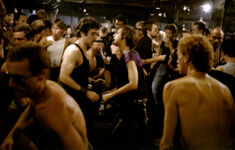

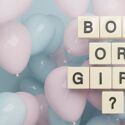

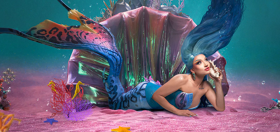


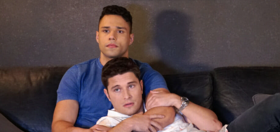

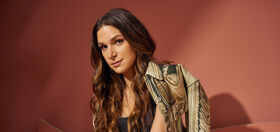



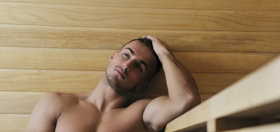



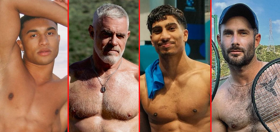
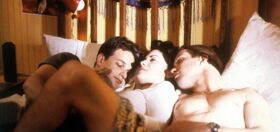
FreddieW
Or you met a guy at church you suspected was gay (and believe me, conservative churches are full of single people who could be single for no other reason), became friends, and then let nature, need, and romance redeem your soul from religious convictions.
Major
We had to use our built-in Gaydar to find other gays.
A quick look and a knowing smile usually did it for me.
Gay in Soulard
Way before … YMCA locker rooms…. too bad the evolution away from group showers to individual stalls with curtains..
sfv1971
Yes! The buddy who taught me how to cruise Griffith Park and Vaseline Alley in WeHo in the 80s is still a buddy to this day! Friends who ho together apparently stay together….
Baron Wiseman
I have found that to be true.
I would usually walk across the street from Vaseline Alley or Gold Coast and cruise Circus of Books.
winemaker
It never has surprised me how far we’ve come yet how we’ve reversed course in meeting men. That said, how many of these impersonal hookups, if that’s not what you’re looking for but looking for something stronger actually result in a quality realtionship? Many if not most of these encounters are quick, slam bam thankee Sam and are fraught with danger. You really don’t know someone after meeting them for 5 minutes, they might look great but could they be the roommate from hell, are they going to drug you and rob and assault you. You end up emotionally drained and unfullfilled and wonder why. And this goes on and on. What’s happened to meeting men in person like in a bar or church ( where you’ll find some great quality guys). Sadly too many things have become so impersonal and this is one of the great tragedies, we’ve become so glued to our screens we swipe and reject somebody who might be a great match and potential boyfriend.
Consider This
Quite glad this post mentioned the very real danger element. I am amazed the risks some guys take.
The world has NOT gotten less violent, especially for members of the LGBT community.
inbama
Oppression – in NYC, at least – often led to exposure to what today is called “elitist” culture. You could always meet someone in libraries, art film houses, standing room at the opera (behind the back row of the bottom floor.
And of course, you’d meet guys at protests. Community was a tangible thing then – not anonymous posters out-PC-ing each other on a blog.
jackmister
I used to go to a gay happy hour every Friday night, where I was a “regular” with a lot of other “regular” bar friends. There was a lot of hooking up. I remember walking into the bar one night, and all of a sudden, everyone had their face glued to their phones. It was like the Borg had taken over.
SoPluckyWhat
Walking the “fruit loop” at Washington Park, the paths at Laurelhurst Park and the toilets in Delta Park. I wasn’t much of a drinker, so the bars weren’t really my thing. I came soooo close a few times with either being beat up or arrested a couple times! My, how times have changed.
barryaksarben
It was. great. I lived in a few gay ghettos as they were called and met my first husband when he was working in a restaurant where a good friend I went to every wedges for the specials and I flirted with him as he was so my type. He was such a smart ass which just turned me on and one night after I got off at my second job at a gas station helping out an uncle and had my greasy uniform on and saw him out very drunk having just lcatching his boyfriend with some one else so of course I gave him my shoulder. The entire. chance was magical time and for it top end up the best way possible.
GayEGO
Gay bars in Boston back in 1961 were the places to meet other gays. I was a Navy Musician in the 1st Naval District Band in Boston, I met my lifetime partner on March 4th 1962, later my husband. Now, I am a widower as my husband passed away at the age of 88 in 2019! I still live in our comfortable Over 55 condo!
Baron Wiseman
@GayEGO
Sounds like a good life.
still_onthemark
Back in the olden days, we had to walk 5 miles thru the snow to the gay bar — uphill.
After we found a trick we walked 5 miles to the trick’s place. That was also uphill.
After sex we had to walk 5 miles home, again uphill, and it kept snowing the whole time.
Hookup apps and climate change have ruined everything!
barryaksarben
lol actually in Omaha Ne that was pretty spot on in the 70s
dbmcvey
I met my husband through personal ads in the LA Weekly. I’ve never used the dating apps so I can’t really comment. All the methods have their ups and downs.
Mack
Back in the 60’s you had to worry about the “vice” squad visiting the bars. You had to really be careful who and how you touch someone there or you got arrested. In LA we had a bar called “My Place”. If you happened to hit on a cop and asked him to go to “my place” and they tried to arrest you, all you had to state that you wanted to go to “My. Place” bar. I had fun those days in the bars, but I met most of my BFs at work. I worked in the restaurant business as a cook then as a manager.
SPEEDOSWIMMER
Mostly MANHUNT.NET for the past 23 years – steady diet of hook-ups.
Yes, through the website…and not their app.
Never used actual phone dating/hookup apps.
Bars were certainly cruising joints and provided some fun times.
Got cruised at the local swim club-pool.
Bathhouses and sex-clubs were adventurous diversions.
Personal ads via local weekly gay publications led to dates and hookups…